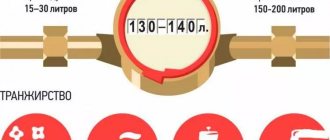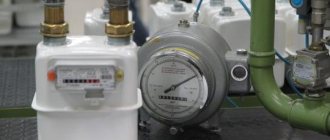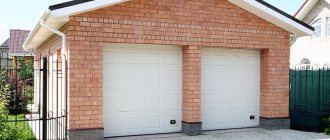Almost all residential buildings are provided with a centralized water supply system. At any time of the day, by turning off the tap on the mixer, you can get water. Of course, this service is paid for by the tenant. But not only individual water consumption is paid for. The tenant will also have to pay for water used for general household needs.
This is natural, because it is necessary to wash common areas and water lawns in local areas. Pressure testing of heating also requires water. How to differentiate between these two expense items? For this purpose, communal water meters are installed in an apartment building.
Why install public meters?
Federal legislation obliges owners to install communal water meters in all apartment buildings. If there is no meter, the management company can charge a fee at the average rate. And it is barbaric, especially since local governments are given the right to independently regulate prices for water consumption.
If, for example, a water leak occurs on a water pipeline outside a residential building, the volume of liquid spilled onto the ground will be proportionally divided between the tenants “sitting” on this pipe and recorded in the “common house needs” section.
With common house hot and cold water meters installed, it will be impossible to force people to pay for water lost along the route. Residents will only pay for the liquid that has passed the water meter. Only after this will the calculation be made.
Types of communal meters
As a rule, turbine water meters act as communal water meters in apartment buildings. They are flanged to the water pipe. The diameter of the nominal diameter ranges from 40 to 150 millimeters. The more apartments in the house, the larger the diameter used.
Preference is given to dry ships. These metering devices are practically independent of the purity of the water. Unlike dry boats, wet boats are easily damaged by poorly filtered debris. There are also combined water meters, which in their design use both an impeller and a turbine, which allows readings to be taken over the full range of water flow rates. Due to the low pressure, the turbine is not able to spin up. At this moment the impeller is working.
Typically, such water meters are produced separately for hot and cold water. Manufacturers do not prevent the use of a hot water meter in the cold water main. But due to the use of heat-resistant materials, hot water meters are usually more expensive.
When choosing a common house water meter, it is important to consider:
- selection of the optimal nominal diameter, allowing operation over the entire flow range for a specific apartment building;
- the ability to install all the associated plumbing shut-off and filter fittings, allowing for maintenance of the device without draining the liquid from the system;
- Possibility of installation on pipes at any convenient angle;
- the presence of a rotary counting mechanism for easy reading of information;
- possibility of metrological calibration;
- Availability of systems that allow reading water meters remotely.
Due to the fact that hot water supply services do not always meet regulatory requirements, consumer interest in hot water meters with an integrated thermal sensor is increasing. The temperature sensor, measuring the temperature of the water passing through it, introduces correction factors into the counting mechanism equal to:
- when water t is more than 50 degrees – k = 1;
- at water temperature from 45 to 49 degrees – k = 0.9;
- from 40 to 44 degrees – k = 0.7;
- When the water temperature is below 40 degrees, hot water consumption is not taken into account; the water meter calculates the consumption according to the cold water supply tariff.
When installing such a water meter, the counting mechanism immediately gives the consumer the number of cubic meters of hot water, taking into account the correction for its temperature. This allows you to save a lot of money. After all, many people are familiar with waiting for hot water to appear from the tap. And the higher the floor, the longer you have to wait. And the meter calmly rotates, adding pennies and rubles of hot water, which is not hot at all.
The disadvantages of this counter are as follows:
- quite high price;
- fierce resistance to the installation of thermal water meters by housing and communal services employees. It is not profitable for them to use this device.
Who installs such a meter and at whose expense?
The price of a common house meter for cold and hot water (including the cost of installation) is from 70 to 300 thousand rubles.
Federal legislation places the responsibility for the purchase and installation of a common house meter on homeowners and management companies. The owner of the apartment building is the municipality. It is logical that all costs for installing meters should be borne by management companies. However, lawyers believe otherwise, placing responsibility for payment on homeowners.
Therefore, the purchase of water meters and the costs of their installation are distributed among the tenants. The amount of payments is calculated in proportion to the area of the occupied apartments. This practice has become fully entrenched in the housing and communal services system. However, there are precedents for challenging it, when the court sided with homeowners and ordered management companies to install communal meters at their own expense.
The amount payable for installing meters is included in the receipt for payment for housing and communal services in the capital repairs section. In this case, the tenant has the right to pay his share in a lump sum, or request installments for a period of up to five years. In case of installment payment, the tenant will have to pay interest in the amount of the refinancing rate established by the Central Bank on the day when the required amount is accrued.
If residents refuse to install communal meters, they are installed by management organizations, after which funds are forcibly collected from the tenants. At the same time, they will have to pay for the mechanism of forced collection of funds.
Requirements for the installation of individual metering devices in residential and non-residential buildings
Created: February 16, 2015 Updated: February 16, 2015
Accounting for resources in accordance with the current legislation of the Russian Federation
For the purpose of efficient and rational use of energy resources, in accordance with Article 11, Part 9 of the Federal Law “On Energy Saving and Improving Energy Efficiency and on Amendments to Certain Legislative Acts of the Russian Federation” No. 261-FZ dated November 23, 2009 (hereinafter referred to as the Federal Law “On Energy Saving”): “Owners of buildings, structures, structures, owners of premises in apartment buildings are obliged to ensure compliance of buildings, structures, structures, apartment buildings with established energy efficiency requirements and the requirements for their equipment with metering devices for energy resources used (with the exception of requirements, ensuring compliance which in accordance with this Federal Law are entrusted to other persons) during the entire period of their service by organizing their proper operation and timely elimination of identified inconsistencies.”
In accordance with Article 13 of the Federal Law “On Energy Saving”, all consumed energy resources (water, heat, electricity, gas) are subject to mandatory metering using metering devices installed at the expense of the property owners.
The requirements of this article regarding the organization of accounting of energy resources used do not apply to dilapidated, emergency facilities, facilities subject to demolition or major repairs before January 1, 2013, as well as facilities whose power consumption of electrical energy is less than five kilowatts (in relation to the organization of accounting electrical energy used) or the maximum volume of thermal energy consumption, which is less than two tenths of a gigacalorie per hour (in relation to the organization of accounting of thermal energy used) or the maximum volume of natural gas consumption, which is less than two cubic meters per hour (in relation to the organization of accounting natural gas used).
Types of metering devices for apartment buildings
The following metering devices are subject to installation in an apartment building: individual and common (collective):
House-wide (collective) devices are devices that take into account the consumption of utility resources of the entire apartment building, that is, the consumption of utility resources by all owners and users of premises (residential or non-residential), plus consumption for common house needs (GDN): “measuring instrument (set of measuring instruments and additional equipment), used to determine the volume (quantity) of communal resources supplied to an apartment building" (clause 2 of the Government of the Russian Federation of May 6, 2011 No. 354 "On the provision of utility services to owners and users of premises in apartment buildings and residential buildings") .
Individual metering devices are devices that take into account the personal consumption of utility resources by the owner of a premises (residential or non-residential): “a measuring instrument (a set of measuring instruments and additional equipment) used to determine the volume (quantity) of consumption of a utility resource in one residential or non-residential premises in apartment building (except for residential premises in a communal apartment), in a residential building (part of a residential building) or household" (clause 2 of the Government of the Russian Federation of May 6, 2011 No. 354 "On the provision of utility services to owners and users of premises in apartment buildings and residential houses").
Payer and payment procedure for installation of metering devices (individual and communal).
According to the requirements of the Federal Law “On Energy Saving” (Article 13, Part 5), the obligation to ensure that their houses and premises (residential or non-residential) in apartment buildings are equipped with meters for used water, thermal energy, electrical energy, as well as putting the installed meters into operation is assigned to on property owners.
In addition, according to the requirements of the Housing Code (Article 158): “The owner of premises in an apartment building is obliged to bear the costs of maintaining the premises belonging to him, as well as to participate in the costs of maintaining common property in an apartment building in proportion to his share in the common ownership of this property by paying for the maintenance and repair of residential premises.”
Thus, all costs for installing both individual and common house metering devices are borne by the owner of the premises (residential or non-residential). At the same time, for the installation of individual metering devices, the owner pays the full amount of the cost of the metering device plus the cost of work on its installation according to the invoice issued by the installation organization chosen by such owner, and when installing a common house metering device - only part of the amount from the total cost of the devices plus the cost of work on it installation, in proportion to the share of such owner in the right of common ownership of common property. The share of the owner of the premises in the right of common ownership of common property in this apartment building is proportional to the size of the total area of the specified premises.
In accordance with Part 9 of Article 13 of the Federal Law “On Energy Saving”, resource supply organizations do not have the right to refuse to persons who apply to them to enter into an agreement for the installation of metering devices. The price of an agreement with a resource-supplying organization is determined by agreement of the parties, and payment by the owner of the premises - a citizen - is made in equal installments over a period of five years from the date of its conclusion, except for the case if such a consumer has expressed his intention to pay the price in a lump sum or with a shorter installment period. When providing an installment plan, the contract price increases by the amount of interest for the installment plan, but not more than the refinancing rate of the Central Bank of the Russian Federation.
In accordance with Part 12 of Article 13 of the Federal Law “On Energy Saving”: citizens-owners of residential buildings, country houses or garden houses, citizens-owners of premises in apartment buildings who did not install metering devices within the prescribed period, if this required resource-supplying organizations to take action for the installation of metering devices for used energy resources (“forced installation”), pay in equal installments for five years from the date of their installation the costs of the specified organizations for the installation of these metering devices, provided that they do not express their intention to pay such expenses at a time or with a shorter installment period . If an installment plan is provided, the costs of installing meters for energy resources used are subject to increase by the amount of interest accrued in connection with the provision of an installment plan, but not more than the refinancing rate of the Central Bank of the Russian Federation.
Commissioning and sealing of installed metering devices is carried out free of charge.
Benefits for the installation of metering devices for certain categories of citizens.
In accordance with Part 11 of Article 13 of the Federal Law “On Energy Saving”: “A subject of the Russian Federation, a municipal entity has the right to provide, at the expense of the budget of a subject of the Russian Federation, the local budget, support to certain categories of consumers by allocating funds to them for the installation of metering devices for used energy resources intended for payments for used energy resources. If these metering devices are installed at the expense of budgetary funds, the persons for whom these metering devices are intended for settlements are exempt from fulfilling this obligation in the relevant part.”
To receive benefits, you must contact the social security authorities.
The procedure for installing metering devices.
General procedure for installing individual metering devices in residential premises:
1. Inspection of the installation site of the metering device.
2. Complete set of metering unit.
3. Installation of a metering device (connection to existing networks).
4.Commissioning works.
5. Delivery of the installed metering device for commercial metering to the resource supply organization and/or management company.
The general procedure for installing common house metering devices in apartment buildings:
1. Inspection of the installation site of the metering device.
2. Obtaining technical specifications for the design of a metering unit (from a resource supply organization and/or management company).
3. Development of design and estimate documentation for the metering unit (by a specialized design organization).
4. Coordination of design documentation for the metering unit with the resource supply organization.
5. Complete set of metering unit in accordance with project documentation.
6.Installation of a metering device (connection to existing networks).
7.Commissioning works.
8. Delivery of the installed metering device for commercial metering to the resource supply organization.
Organizations that install metering devices.
According to Part 8 of Article 13 of the Federal Law “On Energy Saving”: “Actions for the installation, replacement, operation of metering devices for energy resources used are entitled to be carried out by persons who meet the requirements established by the legislation of the Russian Federation for the implementation of such actions”:
— Resource supply organizations;
— Management companies;
— Commercial installation organizations that have a permit to carry out this type of work (otherwise the equipment may be removed from the manufacturer’s warranty and/or may not be allowed into operation due to installation violations);
— Developer in apartment buildings under construction.
Basic requirements for metering devices accepted for commercial accounting.
1.Metering devices must have an approved type certificate from the State Standard of Russia and must be registered in the State Register of Measuring Instruments.
2. Metering devices must be sealed by the metrological service authorities and have a valid mark (seal) on state verification.
3. Metering devices whose verification period has expired are not allowed to be used as metering devices. Metering devices whose certification has expired, as well as those excluded from the register of measuring instruments, but issued during the validity period of the certificate, can be used if they have a valid state verification stamp.
4. The design, installation and operation of metering devices is carried out in accordance with the requirements of regulatory and technical documents of the Gosstandart of Russia, the Gosstroy of Russia, the instructions of manufacturers of measuring instruments, taking into account the specifics of the installed metering devices.
Responsibility for failure to comply with requirements for the installation of metering devices in apartment buildings and individual residential buildings.
According to parts 5 and 6 of Article 13 of the Federal Law on Energy Saving, the obligation to install metering devices is assigned to the owner of the premises.
In addition, Part 12 of Article 13 of the Federal Law on Energy Saving provides for the possibility of “forced” installation of metering devices with the attribution of all associated costs to the owner.
At the same time, “In case of refusal to pay the costs of installing metering devices on a voluntary basis, a person who has not fulfilled the obligation to equip these facilities with metering devices for energy resources used within the prescribed period must also pay the costs incurred by these organizations in connection with the need for forced collection.”
Comments
- Comments
- In contact with
Download SocComments v1.3
Add a comment
JComments
Installation procedure
Before installing a common house water meter, it is necessary to hold a general meeting of apartment owners with the execution of the appropriate minutes and decisions of this meeting.
According to the “Rules for maintaining common property in an apartment building,” common house water meters are collective property. To install an ODPU, at least two thirds of the owners must vote “for”.
Representatives of the management company or HOA must inform the owners about such a meeting. If they do not do this, then according to paragraph 5 of Article 9.16 of the Code of Administrative Offenses, utility workers face a fine.
After the meeting, the initiative group must coordinate the installation with the management company, draw up an estimate and identify an installer. Funds for the purchase and installation of water meters can be provided by the management company. The money is taken from funds collected under capital repairs. Subsequently, these funds are collected from the residents.
The installation of common house water meters should be carried out by a resource supply organization, for example, a water utility. In principle, the installation of common house appliances is mandatory, so residents have no choice but to voluntarily agree to this procedure, gradually paying for it.
At the same time, tenants receive a number of bonuses:
- payment only for water actually consumed;
- exclusion of payment for losses of water resources on the way to the house;
- prompt identification of water losses in the house itself.
Refusal to install will do nothing. The meter will be installed anyway, but this will entail a number of financial losses.
If there is no communal water meter in an apartment building, the management company usually charges for water consumption at a general barbaric tariff, which usually far exceeds the actual consumption of each tenant. Of course, this is a good feeder for housing and communal services organizations. Therefore, when installing a common device, the management company can do its best to avoid receiving data from both the building’s meter and the residents’ individual water meters.
What are the benefits of installing online cash registers?
In most cases, entrepreneurs appreciate the benefits of purchasing a cash register of a new format, since with their help it is really possible to automate most processes. This technique can greatly simplify work with the Tax Authority:
- inspectors will not have to visit retail outlets so often to inspect;
- The Federal Tax Service will always know the real turnover of goods and the revenue of all enterprises;
- dishonest entrepreneurs will be promptly identified and promptly punished in accordance with the law;
- the state can monitor prices for the goods most necessary for consumers.
But the advantages of technology are not limited to benefits for the state; they also exist for end consumers:
- All buyers have the opportunity to check the legality of the transaction using the Tax Authority portal. You can also use a special application for your smartphone or tablet.
- There is no need to store receipts for the return or exchange of goods, since all data on transactions can be found on the official website of the Federal Tax Service.
- It is possible to maintain home accounting in electronic format, which will be much more convenient for most. You need to give the seller an e-mail or phone number, after which an electronic check will be sent.
Of course, the entrepreneurs themselves also benefited:
- Possibility of registering new equipment online, without the need to visit the Tax Authority.
- Refusal of most accounting documents.
- Minimum checks from the Tax Inspectorate if the cash register is working correctly.
- The ability to remotely monitor the work of various retail outlets, analyze trade turnover and complete control over the activities of staff.
- There is no need to issue sales receipts and other documents by hand.
- Possibility of integration with most commodity accounting programs for automatic generation of reports and simplification of product turnover control.
Who takes readings from a common house water meter?
According to the law, readings from a common house water meter are taken by a representative of the resource supplying organization. The possibility of the presence of a delegate from residents is not stipulated in the legislation. However, all governing documents on the interaction of housing and communal services with citizens require a mandatory answer to all questions that arise before the latter.
Whose responsibilities include installation of ODPU
As in any matter related to the provision of public services, there are responsible persons, that is, those who must install communal meters in an apartment building.
To determine the answer to this question, you need to take into account the deadline specified in the legislation - July 1, 2021. Until this moment, the responsibility for installing ODPU lay with the owners of the premises. After this date, responsibility passed to the service organizations. It is they who will be fined for failure to comply with the requirements of the law.
The maintenance company informs residents in advance of the conditions and procedure for installing the devices, and after that enters into an agreement with the company that installs the meters.
Sequence of actions when installing ODPU
Only enterprises that have the necessary permits, knowledge and tools should install heating equipment, since this process is quite labor-intensive.
To install the meter you need to go through the following steps:
- Making a decision on the need to install ODPU.
- Selecting the organization that will carry out the installation of the device.
- Determining the installation location of the ODPU and inspecting it.
- Obtaining technical conditions for installing the device. You can obtain such papers from the resource supplier company.
- Development and approval of design and estimate documentation for meter installation. This is what the design organization does.
- Drawing up and coordination of papers with the resource supplier.
- Purchase of equipment.
- Installation of a common house meter.
- Startup and configuration work.
Pay-per-consumption principle
Payment for water consumption for general house needs is calculated by a representative of the management company together with a delegate from the residents of the house.
On the receipt this is the “ONE” item.
To prevent fraud on the part of management companies, residents of apartment buildings need to be able to independently calculate the amount of water used for general household needs.
To calculate water supply using a common building meter, it is necessary to subtract from the readings of the common meter the sum of the readings of individual water meters from all apartments, the sum of cubic meters of water spent in apartments that do not have meters and calculated according to standards. To calculate the needs for general house needs, the resulting difference must be multiplied by the total area of your apartment and divided by the area of all premises.










